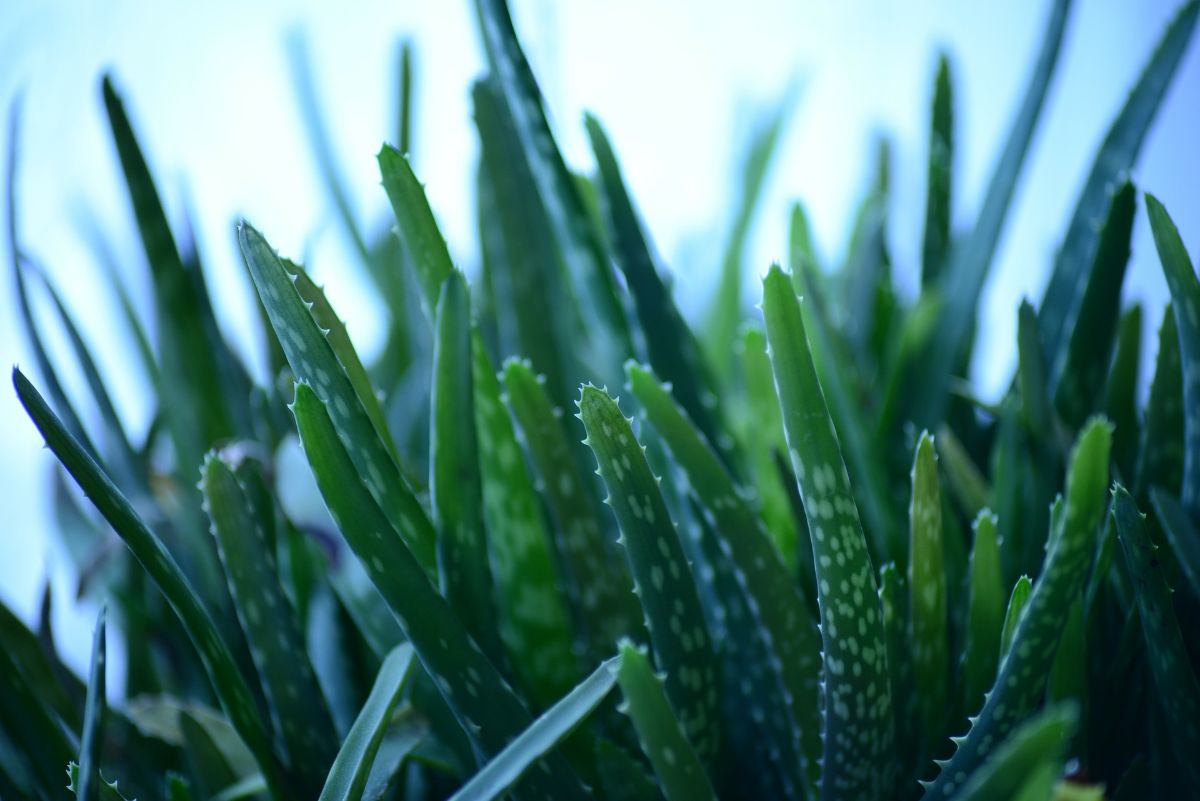
El Aloe vera It is one of the most common plants in homes, especially due to the many benefits it has. In addition, it is quite resistant and does not need much care to provide a space full of greenery and nature. But, if you take good care of it, there will be times when you have to change it pot, and there you may have the doubt of how to transplant the Aloe vera.
If you have asked yourself that question and do not know what would be the best way, here we are going to give you the keys to transplant a Aloe vera and get it right. Prepared?
When to transplant Aloe vera
The first thing you should know is that, to transplant the Aloe vera, it is better to wait for the spring time, which is when he is most active. This does not mean that you cannot change the pot at another time; yes you could, but it is reserved for emergency transplants.
What is the difference between a normal transplant and an emergency one? Basically the way they both tackle each other. For example:
A normal transplant is one that is carried out in the time and form that the plant needs. Most of them entail not only removing it from the pot and planting it in another, but also removing the substrate that was in that pot, checking the roots in case there were any to cut because it is rotten or in poor condition and replanting it. in another pot with new soil.
On the other hand, an emergency transplant is one that is carried out at any time of the year due to different situations (it has grown too much and the roots are already coming out from the bottom, the pot has broken, it is sick and it may be due to lack of nutrients, etc. In this case what is done is to take the plant, remove it from the pot and, as it is, put it in a new one with more substrate. The roots are not touched nor does the plant suffer too much, which helps to have more chance of surviving.
About the transplant Aloe vera, you should keep in mind that experts recommend two essential conditions for transplantation, which are:
- That the plant is at least 30 centimeters tall.
- That it is adult, that is, that the transplant is carried out when the plant is between two and five years old. The problem many times is that, when you buy it, you don't know how old they are, and that can affect when you decide to put it in another pot.
Forms of transplantation Aloe vera

Another important point you should know about the Aloe vera is that there is no single way to transplant. There are actually several ways to do it that you should know. In general, they would be:
- Removing the children from the mother plant. It is done when the plant has grown a lot and, instead of continuing to change it from one pot to an increasingly larger one, the children (shoots) are divided to create several plants. In the case of Aloe vera This is very common and you will also help to sanitize the plant because you will give it more space in the pot (or if you have it planted in the garden).
- Without removing anything from the plant. It is a "normal" transplant since the entire plant as a whole goes to a larger pot. The drawback is that it will eventually need to be divided as it will grow more and more, that if it does not get sick before because the nutrients will have to be shared with more plants.
How to transplant the Aloe vera with the multiplication technique

If we carry out the first form of transplantation, you must bear in mind that you will need several pots, as many as "children" you are going to take from the Aloe vera. And also in different heights.
Also, it is important to have a prepared substrate. The ideal would be soil (from greenhouses) and coarse sand or substrate for cacti. A mixture can help you have all the necessary nutrients. Some also put a layer of gravel at the base of the plant, as this ensures that there is good drainage (others mix it with the above). Our recommendation is this second way because this way you make sure that the roots will have holes to develop and that the soil is not going to become too heavy.
Now that you have pots and soil prepared, it's time to get your Aloe vera. You must remove it from the pot where it is. This should not be difficult, but if it costs you, help yourself with a tool that will lever you to separate it from the pot. Of course, as he has little skewers Aloe veraWe recommend that you wear resistant gloves to avoid punctures or cuts.
Once out, you must remove all the old soil to leave the roots in the air. The offspring are likely to begin to separate from the mother. Do it carefully, since they must come out with their own roots (if they do not come out with them it is more difficult for them to grab).
Check the roots in case you see that there are any in bad condition, very black, too soft, or even with fungi or parasites. If so, the plant must be treated to prevent it from affecting you.
If you have already separated the suckers, you should prepare the pots for each of them. I recommend that you follow a rule of three: if for a Aloe vera of 30 centimeters a pot of at least 20 liters is recommended, one of x cm, you will need a pot of x liters. This way you will only have to measure the suckers of the plant and make that rule to know which is the ideal minimum pot it should have.
Now all you have to do is assemble everything and give each plant its space.
Regarding irrigation, there are two ways to act below. Some experts recommend that it not be watered immediately. Rather, the plant should be allowed at least two weeks to recover from the transplant. Remember that for plants it is a very stressful situation that can put their health at risk. And others who say that it can (and should) be watered immediately.
Our experience tells us that, if you have subjected your multiplication to Aloe vera, it is best to wait a while so that the scars of the cuts that you have heal. If you water, you can cause the water to generate problems, such as the appearance of fungi, infections, etc.
Now that you've seen how easy it is to transplant the Aloe veraDo you have a plant that needs it? Have you ever done it?